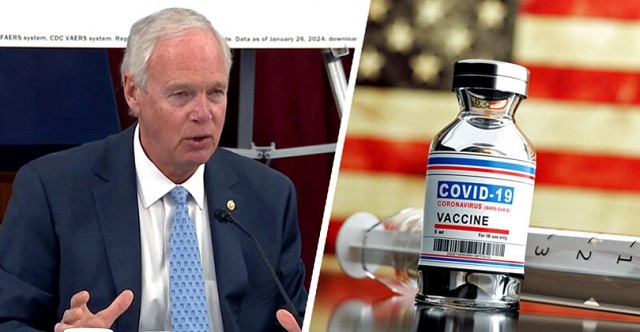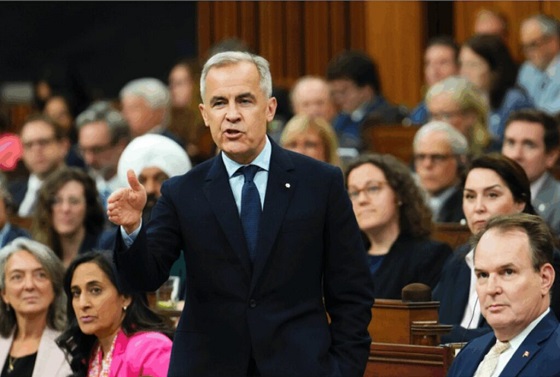Alberta
Preparing for the Return of the Calgary Winter at the Mustard Seed

As Calgary prepares for the descent back into winter, the reliance on nonprofit organizations throughout the city is set to increase as the most vulnerable members of the community turn to support programs and shelters to weather the cold months.
The Mustard Seed is a Christian-faith based organization that values transparency, accountability, respect, communication and holistic innovation. As one of Calgary’s oldest homeless relief organizations, The Mustard Seed has been operating in the city for nearly 40 years.
 By offering a range of products and services to compromised community members in Calgary and across western Canada, The Mustard Seed’s ultimate vision is to eliminate factors that contribute to homelessness and poverty. The organization pursues this goal every day by “providing basic needs (food, clothing and hygiene items), education, employment programs, health and wellness services, spiritual care, housing, and emergency shelter.”
By offering a range of products and services to compromised community members in Calgary and across western Canada, The Mustard Seed’s ultimate vision is to eliminate factors that contribute to homelessness and poverty. The organization pursues this goal every day by “providing basic needs (food, clothing and hygiene items), education, employment programs, health and wellness services, spiritual care, housing, and emergency shelter.”
Founded in 1984 by Pat Nixon, who had experienced homelessness himself as a teenager, The Mustard Seed began as a small drop-in coffee shop. From there, it expanded into a downtown house, and then officially opened as a shelter on 11 Ave SE in 1992. Beginning with just 80 mats and a single location in ‘92, The Mustard Seed now operates five different locations across Calgary, and has the capacity to house 370 adults every night at their Foothills Shelter location. According to Dave Conrad, Community Engagement Manager for the Mustard Seed, the shelter serves close to 315,000 meals every year, and often hits overnight capacity in the winter months, averaging 328 individuals per night in 2019.
In addition to the Foothills Shelter, the Mustard Seed also operates the Downtown Support Centre, the Wellness Centre, the Neighbour Centre, and the Resource Sorting Centre. Across these 5 locations, The Mustard Seed is able to provide a series of advocacy, health and wellness, transportation, employment and spiritual care services to those who need them most.

The Mustard Seed is also responsible for the 1010 Centre, Canada’s largest permanent supportive housing facility, which provides affordable, sustainable housing options in the city of Calgary. They have a total of 285 affordable housing units among four locations: 224 units in the 1010 Centre, 30 units in the Downtown Support Centre, and 31 units in two external housing units.
Providing aid and relief, and fulfilling the most basic human needs as well as educational, employment and social needs for those who require it most is no small task. Issues such as homelessness and poverty pay no attention to a pandemic, and COVID-19 has had a major impact on operations at the Mustard Seed and organizations similar.
In order to maintain compliance with COVID-19 health and safety mandates, the capacity of the Mustard Seed to house individuals has been reduced from 370 at one location to 238 between two locations, which will pose a unique challenge heading into winter. However, Conrad says they are committed to making it work, whatever it takes. “As the winter comes, we tend to see our numbers go up, which will create some unique challenges with the pandemic this year” he says, “but we will continue to work with the community and collaborate with other organizations to ensure that everyone who needs a bed, has a bed.”

Despite the new and ongoing challenges of 2020, the support from the public during the pandemic has been extraordinary, says Conrad. ““We have all been incredibly humbled by the public response over the course of all this,” he says, “we are so encouraged by the outpouring of support from our community.”
Heading back into winter, some of the most pressing needs for The Mustard Seed currently include warm clothes and new underwear, and the organization is also encouraging people to explore available opportunities to return to volunteering.
For more information about The Mustard Seed, visit https://theseed.ca.
To find out how you can contribute and for a comprehensive list of items urgently needed by the Mustard Seed, check https://theseed.ca/urgent-items/.
For more stories, visit Todayville Calgary.
Alberta
Danielle Smith slams Skate Canada for stopping events in Alberta over ban on men in women’s sports

From LifeSiteNews
The Alberta premier has denounced Skate Canada as ‘disgraceful’ for refusing to host events in the province because of a ban on ‘transgender’ men in women’s sports.
Alberta Premier Danielle Smith has demanded an apology after Skate Canada refused to continue holding events in Alberta.
In a December 16 post on X, Smith denounced Skate Canada’s recent decision to stop holding competitions in Alberta due to a provincial law keeping gender-confused men from competing in women’s sports.
“Women and girls have the right to play competitive sports in a safe and fair environment against other biological females,” Smith declared. “This view is held by a vast majority of Albertans and Canadians. It is also common sense and common decency.”
Women and girls have the right to play competitive sports in a safe and fair environment against other biological females.
This view is held by a vast majority of Albertans and Canadians. It is also common sense and common decency.
Skate Canada‘s refusal to hold events in… pic.twitter.com/n4vbkTx6B0
— Danielle Smith (@ABDanielleSmith) December 16, 2025
“Skate Canada‘s refusal to hold events in Alberta because we choose to protect women and girls in sport is disgraceful,” she declared.
“We expect they will apologize and adjust their policies once they realize they are not only compromising the fairness and safety of their athletes, but are also offside with the international community, including the International Olympic Committee, which is moving in the same direction as Alberta,” Smith continued.
Earlier this week, Skate Canada announced their decision in a statement to CBC News, saying, “Following a careful assessment of Alberta’s Fairness and Safety in Sport Act, Skate Canada has determined that we are unable to host events in the province while maintaining our national standards for safe and inclusive sport.”
Under Alberta’s Fairness and Safety in Sport Act, passed last December, biological men who claim to be women are prevented from competing in women’s sports.
Notably, Skate Canada’s statement failed to address safety and fairness concerns for women who are forced to compete against stronger, and sometimes violent, male competitors who claim to be women.
Under their 2023 policy, Skate Canada states “skaters in domestic events sanctioned by Skate Canada who identify as trans are able to participate in the gender category in which they identify.”
While Skate Canada maintains that gender-confused men should compete against women, the International Olympic Committee is reportedly moving to ban gender-confused men from women’s Olympic sports.
The move comes after studies have repeatedly revealed what almost everyone already knew was true, namely that males have a considerable innate advantage over women in athletics.
Indeed, a recent study published in Sports Medicine found that a year of “transgender” hormone drugs results in “very modest changes” in the inherent strength advantages of men.
Additionally, male athletes competing in women’s sports are known to be violent, especially toward female athletes who oppose their dominance in women’s sports.
Last August, Albertan male powerlifter “Anne” Andres was suspended for six months after a slew of death threats and harassments against his female competitors.
In February, Andres ranted about why men should be able to compete in women’s competitions, calling for “the Ontario lifter” who opposes this, apparently referring to powerlifter April Hutchinson, to “die painfully.”
Interestingly, while Andres was suspended for six months for issuing death threats, Hutchinson was suspended for two years after publicly condemning him for stealing victories from women and then mocking his female competitors on social media. Her suspension was later reduced to a year.
Alberta
Alberta’s huge oil sands reserves dwarf U.S. shale

From the Canadian Energy Centre
By Will Gibson
Oil sands could maintain current production rates for more than 140 years
Investor interest in Canadian oil producers, primarily in the Alberta oil sands, has picked up, and not only because of expanded export capacity from the Trans Mountain pipeline.
Enverus Intelligence Research says the real draw — and a major factor behind oil sands equities outperforming U.S. peers by about 40 per cent since January 2024 — is the resource Trans Mountain helps unlock.
Alberta’s oil sands contain 167 billion barrels of reserves, nearly four times the volume in the United States.
Today’s oil sands operators hold more than twice the available high-quality resources compared to U.S. shale producers, Enverus reports.
“It’s a huge number — 167 billion barrels — when Alberta only produces about three million barrels a day right now,” said Mike Verney, executive vice-president at McDaniel & Associates, which earlier this year updated the province’s oil and gas reserves on behalf of the Alberta Energy Regulator.
Already fourth in the world, the assessment found Alberta’s oil reserves increased by seven billion barrels.
Verney said the rise in reserves despite record production is in part a result of improved processes and technology.
“Oil sands companies can produce for decades at the same economic threshold as they do today. That’s a great place to be,” said Michael Berger, a senior analyst with Enverus.
BMO Capital Markets estimates that Alberta’s oil sands reserves could maintain current production rates for more than 140 years.
The long-term picture looks different south of the border.
The U.S. Energy Information Administration projects that American production will peak before 2030 and enter a long period of decline.
Having a lasting stable source of supply is important as world oil demand is expected to remain strong for decades to come.
This is particularly true in Asia, the target market for oil exports off Canada’s West Coast.
The International Energy Agency (IEA) projects oil demand in the Asia-Pacific region will go from 35 million barrels per day in 2024 to 41 million barrels per day in 2050.
The growing appeal of Alberta oil in Asian markets shows up not only in expanded Trans Mountain shipments, but also in Canadian crude being “re-exported” from U.S. Gulf Coast terminals.
According to RBN Energy, Asian buyers – primarily in China – are now the main non-U.S. buyers from Trans Mountain, while India dominates purchases of re-exports from the U.S. Gulf Coast. .
BMO said the oil sands offers advantages both in steady supply and lower overall environmental impacts.
“Not only is the resulting stability ideally suited to backfill anticipated declines in world oil supply, but the long-term physical footprint may also be meaningfully lower given large-scale concentrated emissions, high water recycling rates and low well declines,” BMO analysts said.
-

 Alberta1 day ago
Alberta1 day agoDanielle Smith slams Skate Canada for stopping events in Alberta over ban on men in women’s sports
-

 Health2 days ago
Health2 days agoSaskatchewan woman approved for euthanasia urged to seek medical help in Canada rather than US
-

 Indigenous2 days ago
Indigenous2 days agoResidential school burials controversy continues to fuel wave of church arsons, new data suggests
-

 International2 days ago
International2 days agoFBI didn’t think it had cause to raid Trump but DOJ did it anyway
-

 International22 hours ago
International22 hours agoTOTAL AND COMPLETE BLOCKADE: Trump cuts off Venezuela’s oil lifeline
-

 Crime1 day ago
Crime1 day agoThe Uncomfortable Demographics of Islamist Bloodshed—and Why “Islamophobia” Deflection Increases the Threat
-

 COVID-1921 hours ago
COVID-1921 hours agoSenator Demands Docs After ‘Blockbuster’ FDA Memo Links Child Deaths To COVID Vaccine
-

 Energy1 day ago
Energy1 day agoLiberals Twisted Themselves Into Pretzels Over Their Own Pipeline MOU




